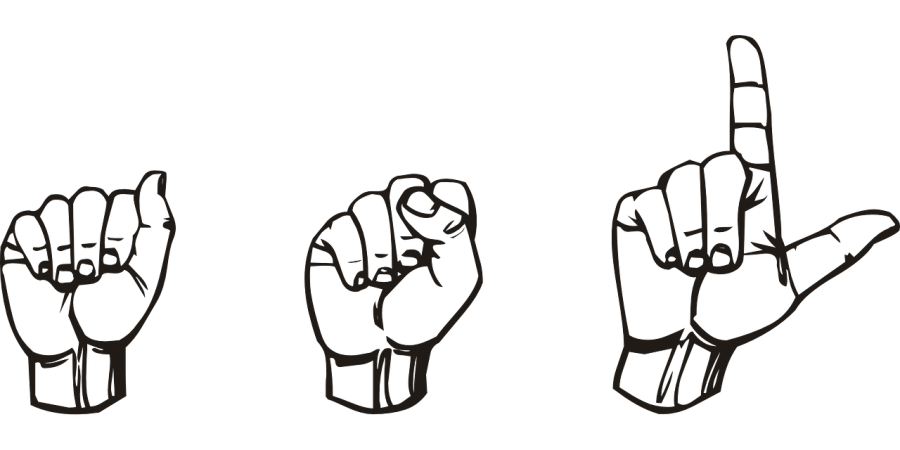ASL Is Raising Awareness Within FHC
In Room 126, students enrolled in American Sign Language furiously practiced their dialogue for their upcoming test. The classroom fell silent with nothing but the muffled sounds of hands brushing against each other in the background. As the students’ hands moved gracefully through the air, their faces were busy using expressions to portray the emotion in their signs. To a casual observer, these signs and expressions are just random hand motions; however, to American Sign Language students, it’s communication. At FHC, ASL teacher Kimberly Williamson works with students to transform the seemingly uninterpretable signs into a way to communicate.
Williamson began taking ASL in college after discovering her father was going deaf. She found she had a knack for the language, and eventually came to the decision to add it to her education degree. Once she graduated, she took on the role of the ASL teacher at FHC, and has been here since the program began four years ago. For Williamson, ASL is an intense passion with incredible value, and the ability to share that with students holds the utmost importance to her.
“I like to think it gives me a sort of purpose,” Williamson said. “I like knowing I come here. The kids, for the most part, see my passion about it, and they can tell what my goal is, and it has become something I’m proud of.”
One of the most unique aspects of ASL is the exposure students get to deaf culture. Because most students are not affected directly by deafness, it can be difficult to understand the magnitude of the struggles deaf people endure. Williamson hopes to expose students to these difficulties and have them be supportive and open minded to the deaf community.
“Just like with any other language, my goal is to not necessarily teach all about the language, but is to teach about the culture,” Williamson said. “I feel like it opens up [students’] minds, which I think is crucial, especially now. They have a hard time viewing things from other people’s perspectives, and I think that’s really important for kids to see, especially at this age.”
To truly expose students to the difficulties of living life as a deaf person, Williamson has them participate in an activity referred to as “deaf for a day.” During this activity, students are only able to sign, and they experience what it is like for deaf people in the real world.
“I think it’s really important to realize we do live amongst people that are different than us,” Williamson said. “There are really easy ways that we can go out of our comfort zone to make them feel accepted, or really just think about it.”
Although ASL has the ability to impact people and raise awareness for those who have to learn to live life without speaking, many schools do not offer ASL. In the ASL community, there is a lack of able teachers, which makes the desire to expand programs and raise even more awareness increasingly difficult. The program at FHC has rapidly grown, and while this is exciting news, the lack of teachers makes managing the growing program difficult. To help educate the growing number of students taking an interest in ASL, the ASL teacher from FHN, Teresa Suwyn, splits her time between FHC and FHN. While the growing number of students enrolling in ASL is exciting, finding teachers to educate these students is a challenge.
Because of the lack of teachers in the ASL community, FHC is one of the few schools in the area that offers ASL. Students at FHC are some of the few students in the area with the ability to learn not only ASL, but increase their knowledge of the deaf community and the challenges deaf people have to overcome in their daily lives. One student that recognizes their privilege to take ASL is sophomore Hannah Weinman.
“I really appreciate that I get this opportunity to learn about something so different from our everyday lives,” Hannah said. “I think every school should offer [ASL] as a course, but because FHC is one of the few, it makes [taking the class] an even more special experience. I really hope that someday other high schools will integrate it into their school systems so that [other students] can feel just as lucky.”
Despite only a few schools in the area have the ability to teach ASL, the impact it has on students is still large. The growing respect for the deaf community is quite impressive, and shows prospects for even more awareness and recognition.
“ASL has really opened my eyes to the different opportunities that the world has to offer,” Hannah said. “It makes me feel like I can make a difference and help the community. It has helped me grow as a person and appreciate music, speech, [and other] little things a lot more. To most, ASL is just a language, but to me, it’s a path to different perspectives and growth.”

Krystal is a junior entering her second year on staff. As a part of the Forest Hills Central Rowing Team for the past three years, she hopes to continue...



























































































